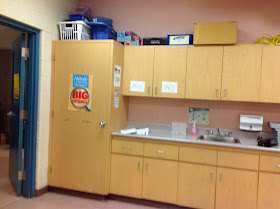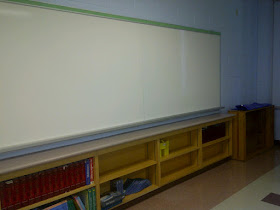Have you ever considered how important "talk" is to learning? Today I went to the Pearson Celebrating Literacy Conference and heard two excellent speakers, Lucy West and Pauline Gibbons. Both speakers shared the importance of talk in the classroom to promote student learning AND to promote teacher learning!
Lucy West discussed the importance of "Dialogic Teaching", or teaching through dialogue. But we can't assume that children know how to dialogue. In fact, in my experience, children don't really know how to converse with one another, they seem to talk more AT one another than WITH one another, working hard to get their point across, not realising that they need to listen to one another as well.
We have to teach children explicitly HOW to converse with one another, how to share ideas, how to questions one another, how to seek meaning in conversation. One way to do that is to model "academic discourse" for them. I'm talking about discourse between yourself and a colleague. Do your students hear you discussing teaching practices and strategies? Do they hear you questioning one another and asking for opinions, clarifications and advice?
Lucy West suggests that we are too "nice" to one another in schools, that we have far too many "friendly" conversations with our colleagues. Schools are very nice places. We don't like to hurt anyone's feelings. How many times has a colleague shared a worksheet that they are having their students do, a worksheet that is clearly busy work, that has no redeeming academic value whatsoever, and you've said "wow cool", instead of "What do you hope to have them achieve by doing that?"
I once had a teacher tell me that her students had greatly improved in their ability to copy off the board. I said "That's great", instead of "Why do you want them to copy off of the board?" It was a perfect opportunity for a professional conversation, and I wasted it!
Maybe we have to stop being quite so nice with one another. We need to start challenging one another's practice, (we can still do it in a "nice" way). It is only when we challenge one another, questioning what we hope to achieve, that we can begin to nudge one another forward in our professional practice. We have to move from friendly conversations to Collegial Discourse. Like medicine, engineering, technology, (and so many other professions), teaching is not static, we need to grow and change just like the students in front of us do. And we can't do that alone. We need our peers to help us reflect, question, analyse and study what we do so that we can learn to do it even better!
I'm very lucky because this year I will be working with a group of other Grade Six teachers from all across our board. We range in ages from 25-50 with very different skills and teaching experiences. We've already met twice this summer. This group inspires me to be the best that I can be. We're proof that you don't need to be working in the same building to be part of a Professional Learning Community that challenges you to learn and grow!
If you are interested on learning more about dialogic teaching, check out Lucy West on her website!
Lucy West















